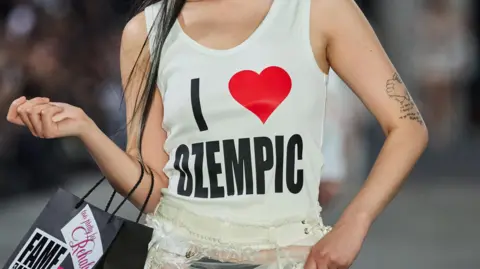 Sebastian Reuter/Getty Photographs
Sebastian Reuter/Getty PhotographsThe excessive trend business has at all times been synonymous with thinness, however for a short second within the 2010s, the physique positivity motion was on the forefront.
It promised a revolution of accepting our bodies of all styles and sizes, welcomed curves and advocated for inclusion, notably on the runway.
However 10 years on, business insiders inform us issues have shifted. Was physique positivity a flash-in-the-pan pattern? And with assist with weight reduction medicine corresponding to Ozempic, is skinny again for good?
We communicate to designers, casting brokers and fashions at Paris Trend Week to analyze what is occurring.
The 2010s: The period of physique positivity
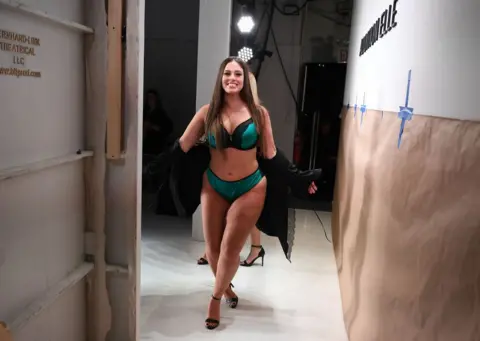 ANGELA WEISS/AFP by way of Getty Photographs
ANGELA WEISS/AFP by way of Getty PhotographsThe physique positivity motion finds its origins within the hazy days of the Sixties and was helped by icons like Marilyn Monroe who broadened Hollywood’s inflexible magnificence customary.
It was delivered to the forefront once more within the 2010s, when Instagram was launched and influencers started to spotlight trend and wonder outdoors of the shiny magazines and runways.
Serving to this was the celeb Kardashian household, whose curves triggered BBLs (Brazilian butt raise surgical procedure) world wide.
Enrika, a 28-year-old plus-sized mannequin, mentioned: “When the physique positivity motion emerged, it felt extremely empowering and liberating.”
“It felt like an act of rebel – what had at all times been criticised was now being appreciated. It was as if we had lastly had sufficient of being judged.”
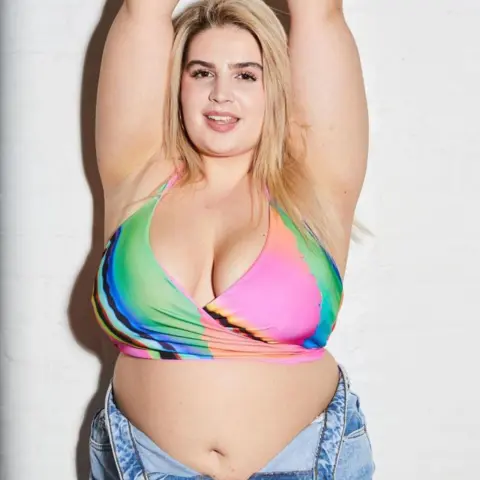 Enrika/Gingersnap Fashions
Enrika/Gingersnap FashionsPlus-size fashions had been being booked for large manufacturers, together with Rihanna’s extremely coveted lingerie label, ‘Savage x Fenty’ which launched in 2018.
The model, valued at $1bn, turned recognized for its runway extravaganzas, harking back to a contemporary different to the long-lasting Victoria’s Secret exhibits, however this time with each physique kind on show.
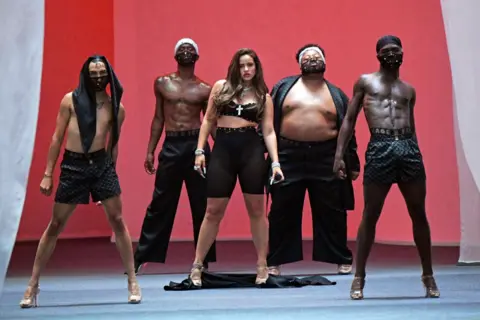 Kevin Mazur/Getty Photographs for Savage X Fenty Present Vol. 2 Offered by Amazon Prime Video)
Kevin Mazur/Getty Photographs for Savage X Fenty Present Vol. 2 Offered by Amazon Prime Video)Felicity Hayward, a 36-year-old plus-sized mannequin, displays on being scouted in 2011.
“After I obtained that decision from my first modelling company Storm – who found Kate Moss – I assumed I used to be being punk’d,” she mentioned.
“Earlier than the 2010s, attitudes round greater our bodies weren’t constructive and I by no means thought being a plus-size mannequin was a risk.
“Seeing that narrative change over the past decade and a half has been life altering each emotionally, bodily and financially.”
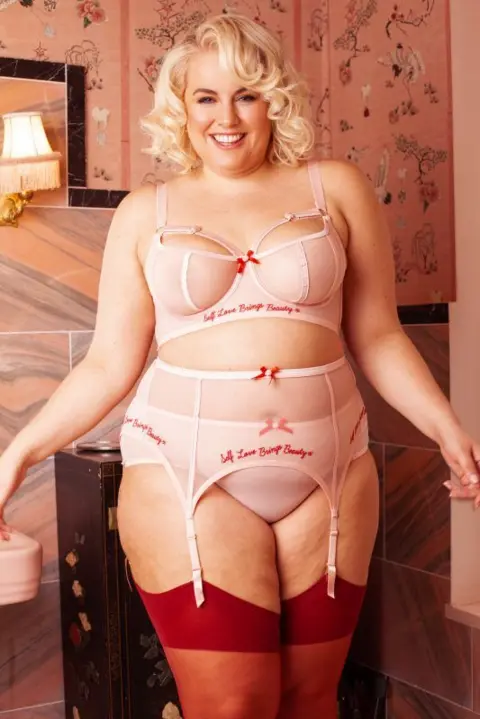 Felicity Hayward, The Milk Collective
Felicity Hayward, The Milk CollectiveThe 2020s: The period of Ozempic
However then round 2020, progress began to sluggish. And are available the autumn and winter of 2024, of the 8,800 appears to be like throughout 230 exhibits, simply 0.8 per cent had been on plus-size fashions, Vogue stories.
On the identical time, a brand new weight reduction drug used to deal with diabetes got here onto the market and skyrocketed in reputation. Semaglutide, often known as Ozempic and Wegovy, curbs the urge for food of customers, and was permitted by the NHS for weight reduction in 2023.
Celebrities together with Elon Musk began crediting the drug for his or her newly slim body and it was solely a matter of time earlier than that trickled all the way down to customers.
 Elon Musk/Eva McMillan/X
Elon Musk/Eva McMillan/XAs Ozempic and its counterparts turn out to be extra commercially out there for aesthetic functions, business insiders declare it has affected the physique positivity motion.
Mannequin, Moya, mentioned: “We have seen how rapidly the narrative shifted, with celebrities and influencers utilizing surgical procedures or medicine like Ozempic to chase what’s thought-about ‘in Vogue’.”
One other mannequin, Jenny, mentioned: “After I realised skinny was again, it was constructive as a result of I used to be going to get extra jobs.
“However I’ve realised it means now I’ve to maintain up. Now I’ve to be the skinniest.”
Even the editorial director of British Vogue mentioned that the trend business “must be involved” by a latest pattern again to utilizing extra skinny fashions
Chioma Nnadi informed BBC Radio 4’s Immediately programme: “I do suppose possibly maybe Ozempic has one thing to do with it.”
“We’re on this second the place we’re seeing the pendulum kind of swing again to skinny being ‘in’ and infrequently these items are handled like a pattern and we do not need them to be.”
Then Berlin model, Namilia, went viral for an “I like Ozempic” T-shirt on their 2024 Trend Week runway.
“The ‘I like Ozempic’ tee actually hit a nerve,” laughed Nan Li, the model’s inventive director who claims the T-shirt was satire.
“With the rise of Ozempic, so many individuals are utilizing it. Over the previous few years, celebrities simply misplaced weight and did not discuss it.”
Paris ‘celebrates elitism’
Quick-forward to January, when Males’s AW25 Trend Week lands in Paris and audiences get a litmus take a look at in real-time of precisely the place manufacturers stand.
Apart from a choice of designers, together with Rick Owens, LGN and Charles Jeffrey LOVERBOY, I can rely on two arms what number of plus-sized fashions I noticed at per week of exhibits.
Nan Li mentioned: “Paris celebrates elitism, and elitism means skinny and white.”
“There is a handful of plus-sized fashions [at the shows] however they’re not likely plus – they’re normal-sized. They’re solid in each present to make the model seem physique constructive.”
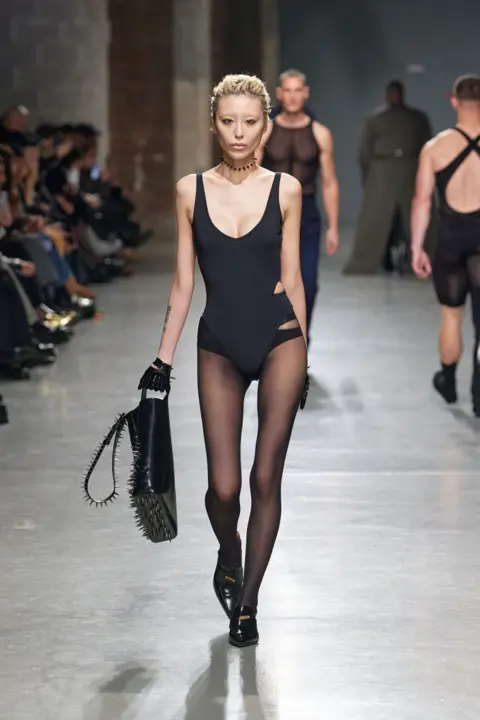 Victor Boyko/Getty Photographs
Victor Boyko/Getty PhotographsAmidst the hustle and bustle of trend week, Shaun Beyen, casting director for iconic French model Fursac, informed the BBC: “The one motivation for a model is to promote garments – that is it. I do not suppose we have to lie about this.
“Manufacturers adopted physique positivity within the 2010s as a result of partially they noticed it as a business alternative, and once they noticed it was now not performing as they might hope in 2020, they hopped off.”
Beyen added: “Full transparency – I do not actually need to see garments on somebody like me. I need to see it on any individual I aspire to appear like.”
Gauthier Borsarello, Fursac’s inventive director, laughed in settlement and mentioned: “I hate my physique. I do not need to see garments on individuals like me.”
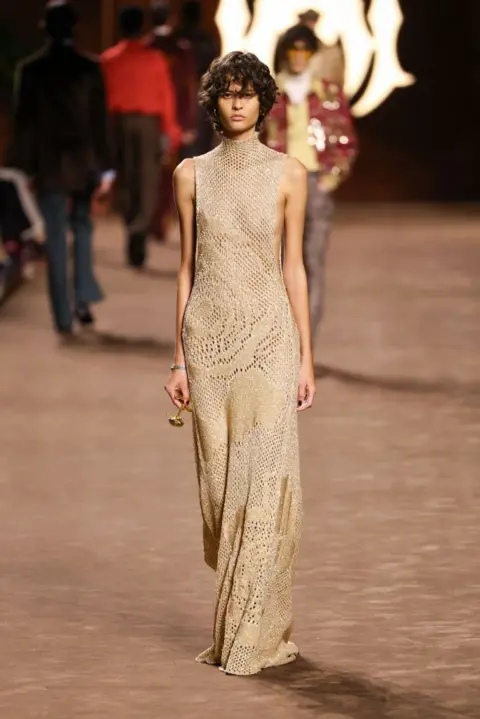 Antoine Flament/Getty Photographs
Antoine Flament/Getty PhotographsThen again, designers like Charles Jeffrey consider manufacturers have an ethical crucial to solid inclusively. “Physique positivity was by no means a pattern for me,” he mentioned. “It was a possibility to begin being accountable.”
Physique positivity is knitted into the very material of Charles’ model, which takes inspiration from the queer nightlife scene. That is readily obvious all through his Paris Trend Week present.
The designer defined: “The individuals in my exhibits are individuals I used to be clubbing with. It was by no means about fashions, it was my mates and their completely different physique shapes. It was concerning the neighborhood I surrounded myself with.”
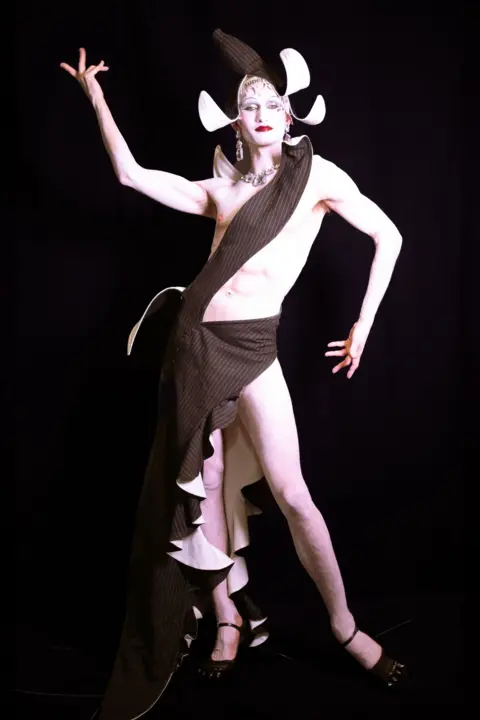 Purple PR/Charles Jeffrey Loverboy
Purple PR/Charles Jeffrey LoverboyPhysique positivity ‘taken a backseat now’
It appear the truth is that designers like Charles are the exception to the rule. As a lot as activists resist it, business insiders affirm that physique positivity is behind us.
Daniel Mitchell-Jones, co-founder of modelling company Chapter Administration, mentioned: “Sure, issues have shifted. In 2020 and 2021, we noticed a lot extra variety and inclusion on the runways – however body-wise, that is taken a backseat now.”
Daniel mentioned when he sends his curve fashions to castings, they’re at all times pushed, however is commonly informed the model is not this season.
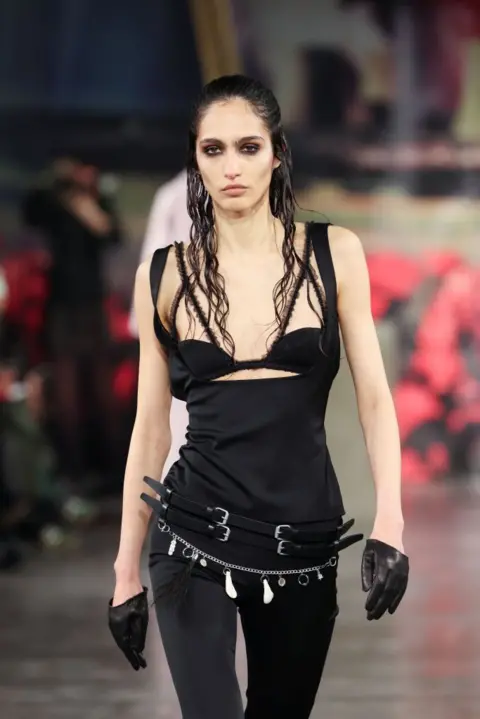 Antoine Flament/Getty Photographs
Antoine Flament/Getty PhotographsPlus-size mannequin Enrika informed the BBC that not solely are plus-sized fashions being booked much less, their brokers are actively struggling to safe work for them.
She defined: “It is common to see campaigns that includes 4 sample-size fashions and just one plus-size mannequin. This may make you are feeling such as you’re only a token.”
Enrika mentioned these manufacturers generally usually use techniques in campaigns to virtue-signal being inclusive – corresponding to highlighting stretch marks on plus-sized fashions, while airbrushing them on others.
She mentioned: “It sends the message that ‘We do not truly suppose you look pretty much as good because the slim fashions in our skirt. However we settle for you as a result of we’re such kind-hearted good individuals, so please give us your hard-earned cash’, it is nasty work and I do not assist it.”
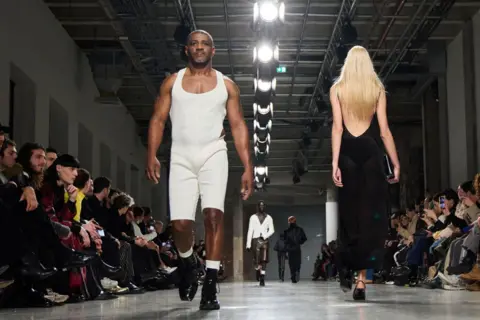 Peter White/Getty Photographs
Peter White/Getty PhotographsIn order for you change, change your shopping for habits. At the very least, that is what Shaun Beyen, believes: “All the pieces is consumer-driven”.
“It is this type of vicious circle. Each trend home provides their model of what they know the shopper needs, it is their interpretation and it is as much as the buyer.”
Gauthier Borsarello mentioned: “There is a well-known French saying: ‘If individuals cease producing, individuals will cease shopping for.’ However the inverse is true. If individuals cease shopping for, we cease producing.
“No-one is forcing you to do something. It is an training of the shopper: In a well mannered manner – educate your self.”
And the one good thing about our bodies as traits is that the pendulum will finally swing again. Beyen mentioned: “Nothing is ever gone, particularly not in trend.”

